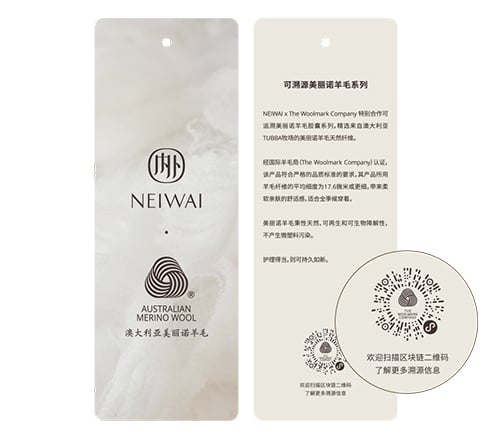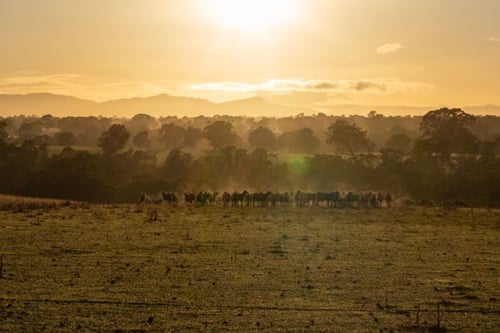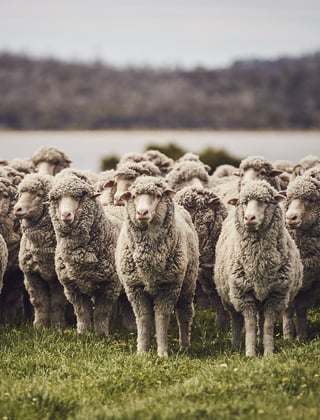Using traceability to showcase Australian wool
With the assistance of The Woolmark Company, Chinese apparel brand NEIWAI recently launched a Merino wool collection that is fully traceable through the supply chain back to the specific farm in Australia that produced the wool.
With the assistance of The Woolmark Company, Chinese apparel brand NEIWAI recently launched a Merino wool collection that is fully traceable through the supply chain back to the specific farm in Australia that produced the wool.
With consumers more and more interested in the eco-credentials and source of their clothing, brands are increasingly wanting to showcase the on-farm origin of the wool they use and the traceability of their clothing through the supply chain.
An example is premium Chinese lifestyle brand NEIWAI, with which AWI’s marketing arm The Woolmark Company partnered to help launch a collection of high-quality – and traceable – Merino wool products.

Marketing collateral for the NEIWAI X WOOLMARK traceable collection.
The Woolmark-certified collection consists of 3D seamless wool apparel and geometric jacquard wool garments, including long-sleeved cardigans, V-neck vests, loose-fitting pullovers, knitted jumpers, and micro-jersey trousers.
This traceable Merino wool collection addresses the demand for sustainable, high-quality intimate apparel, with the superfine Merino wool providing the garments with a soft, comfortable feel next to the skin.
“This naturally superior fabric is made using pure, raw materials with verifiably eco-friendly sources in a transparent production process designed to allow wearers to know their clothing’s story all the way back to its pasture-grown origins.”
-- Chinese brand NEIWAI
Blockchain technology aids traceability
With The Woolmark Company’s assistance, NEIWAI utilised ‘blockchain’ technology from digital transparency company Everledger to track and validate the exchange of ownership of the wool used in the new NEIWAI X WOOLMARK collection as it moved along the supply chain, from farm through overseas processing and manufacturing to finished products.
The 17.6-micron wool fibres used in the collection were sourced from Merino sheep on the ‘Ballintubber’ property run by Darryl and Lyndal Delahoy and their son Cameron, at Bulart near Hamilton in Victoria. The fibres were then processed by leading Chinese topmaker Red Sun before being spun into yarn by Südwolle Group.
The result is that each of the apparel products at retail has a swing ticket with a QR code that enables consumers to trace the product from the sustainably grown fibre on-farm in Victoria to the final garment, thereby authenticating the provenance of the product.

A QR code on the swing ticket on each garment enables customers to find out the provenance of the garment and the wool fibre from which it is made.
AWI Program Manager, Woolmark Certification & Traceability, Mark Scott, says the traceability system used by NEIWAI follows on from a collaborative pilot project undertaken last year between AWI and Everledger that proved the feasibility of the new technology.
“The technology promises value to all parties in the supply chain, whether that is attracting new buyers or higher prices for woolgrowers, enabling verifiable information for certifiers and regulators, or equipping apparel brands – in this case NEIWAI – to have a robust point of difference with their finished garments,” Mark said.
“The use of the technology on this NEIWAI X WOOLMARK collection is a real-world example of how AWI’s investment in traceability systems is building brands’ demand for wool, which ultimately creates returns for Australian woolgrowers.”
Showcasing the Delahoys’ quality wool and on-farm eco-credentials

The NEIWAI X WOOLMARK collection showcases the source of the Merino wool fibre at the Delahoys’ ‘Ballintubber’ property in Victoria.
For three generations, the Delahoy family has run the property where 7,000 Merino sheep are currently farmed. Over many years, the family has gradually implemented different strategies to help the environment of the land that they farm.
“This is vital to help not only the environment but also to help our stock and to ensure the wool we produce is of good quality,” Darryl said.
“Since the early 1990s, we have been planting shelter belts with native vegetation to help protect our stock and provide habitat for birdlife. We also planted our first agroforestry plantation in the late ’90s and have planted several more since then.
“We continued to implement conservation strategies; in 2005 we fenced off a large dam and creating a wetland area that provides shelter for many native animals. We have also fenced off river and creek frontage to help prevent erosion. By putting these practices in place, we are creating a more sustainable environment for our future.”
Cameron said it makes the family immensely proud to know that they are producing in a sustainable environment quality wool that an overseas brand like NEIWAI wants to repeatedly purchase.
“The traceability project reinforces that our practices on the farm are producing wool that major companies are eager to buy. It is also great to be able to see that our wool is being produced into quality products,” Cameron said.
“Consumers are nowadays a lot more conscious of the products that they are buying and where they come from. Traceability in the Australian wool industry is vital to help consumers make an informed choice about their purchases and make them more likely to support our industry and purchase wool products.”
This article appeared in the December 2022 edition of AWI’s Beyond the Bale magazine. Reproduction of the article is encouraged.














